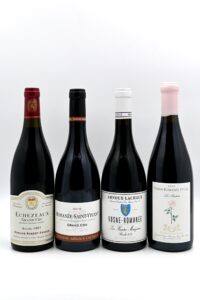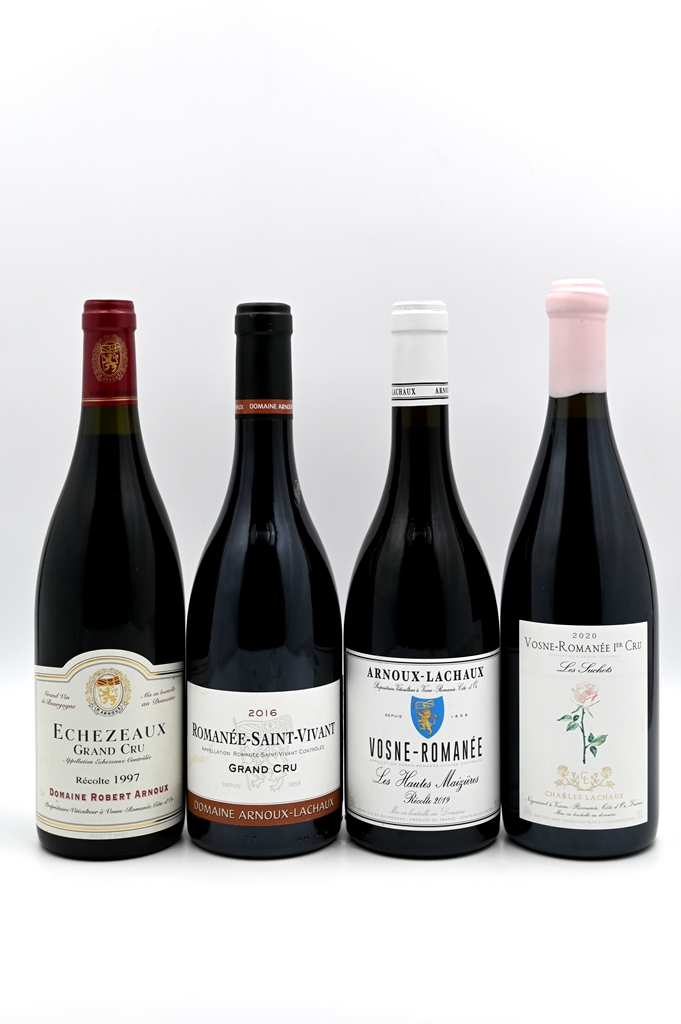Along with Cécile Tremblay, Arnoux-Lachaux in Vosne-Romanée has recently joined the ranks of the best producers in Burgundy. While Cécile Tremblay is a young producer, founded only 20 years ago, Arnoux-Lachaux boasts a history of 165 years.
Pascal Rachot.
Domaine Arnoux Lachaux's predecessor was Domaine Robert Arnoux, founded in 1858, and the adjective "little DRC" was frequently used in mailings from Japanese wine stores. This was a reference to Robert Parker's early writings. During the reign of Robert Arnoux, the fourth generation, Robert Arnoux did not receive much acclaim, and the quality of the wines produced in the 1980s was sluggish.
A turning point came when Robert Arnoux's daughter-in-law, Pascal Lachaud, joined the wine production. Robert had three daughters, but there were no boys to run the estate, so he asked Pascal, the son-in-law of his youngest daughter Florance who married in 1987, to join him at the estate. Pascal was originally a pharmacist in Beaune and had nothing to do with wine production, but he took a short intensive course at the University of Dijon and learned the basics of winemaking.
Around the time of Robert Arnoux's death in 1995, Pascal dramatically changed his viticultural and winemaking practices. Most importantly, he limited yields in the vineyards. In contrast to Robert's method of harvesting grapes up to the maximum allowed by the Designation of Origin Law, Pascal reduced the number of bunches harvested from each vine by pruning buds and picking clusters. Specifically, he reduced the number of bunches to nine for AC Burgundy, seven to eight for the village names, and six for the first growths and special classified vineyards. This yield limitation has made it possible to harvest ideally ripe grapes and produce wines of great concentration.
Pascal also made major changes in the winemaking process. Unlike the traditional methods of Robert's time, he adopted the Henri Jayer style of vinification, which was becoming popular worldwide, where 100% of the harvested Pinot Noir was destemmed and macerated at low temperatures prior to alcoholic fermentation. Also in line with the global trend, the percentage of new oak used for aging was increased to about 50% for wines from first-class vineyards, and to 100% for those from special-class vineyards. In addition, they stopped draining the casks during the aging process and allowed the wine to age on casks until bottling. In 2008, Pascal changed the name of the estate to Arnoux-Rachaud. The vineyards he cultivates cover 14 hectares and include the gem climates of Echézeaux, Clos de Vougeot, Latricière Chambertin, and Vosne-Romanée Les Suchots, with Romanée-Saint-Vivant at the head of the list.
Charles Lachaux.
In 2011, Pascal Lachaux's eldest son, Charles, joined the estate to take it to new heights. Charles is an expert viticulturist, strongly influenced by Laloux Beise-Leroy and Jean-Yves Bizot. Just as Pascal modified Robert Arnoux's methods at every turn, Charles made reforms that undid Pascal's vinification changes when he retired in 2013. Specifically, he abandoned the Henri Jayet-style vinification that Pascal had adopted, which was 100% destemmed to preserve pure fruit, and instead pushed forward to the traditional whole cluster fermentation found in Domaine de la Romanée-Conti, Domaine Leroy, and Domaine Bizot, resulting in a complex, layered flavor profile. Pascal has also dramatically reduced the new oak ratio to 30% for the higher cuvées, which he had increased to 100%.

According to the estate, for the 2022 vintage, oak barrels will be eliminated and all wines will be aged in Claver ceramic vessels (see photo). Furthermore, the maceration period for soaking the skins and stalks has been shortened to 6 to 9 days, which allows the wines to break away from the intense flavors of Pascal's time and become more gently flavored. To put it simply, Pascal's wines were black fruit, whereas Charles' are red fruit.
In viticulture, they are promoting organic and biodynamic viticulture, and are conducting very creative experiments, such as stopping the picking of corks (cutting the shoots in the middle of the vine in early summer in order to concentrate the vigor on the fruit) and changing the vine-tailoring method from Guyot to Goblet to try to improve the flow of the sap. Because the vines were harvested earlier, the alcohol content of the wine is only about 13%, reminiscent of the low-alcohol Burgundy reds of the 1970s and '80s. The wines are not intense, but they are fragrant, fine-grained, and sensual.
THE ESTATE USED TO HAVE THE ADJECTIVE "LITTLE DRC," BUT JASPER MORRIS MW, WHO SPECIALIZES IN BURGUNDY WINES, TASTED THE 2019 VINTAGE AND COMMENTED TO THE EFFECT THAT IT IS NOW "ON PAR WITH DRC.
Charles Lachaux has also established his own eponymous negociant division and is deeply involved in the cultivation of his grape supply farmers, resulting in high quality wines. Whole cluster fermentation of red wines requires that healthy Pinot Noir grapes be harvested at high maturity, and Charles himself decides when these grapes are harvested, and his staff actually picks the grapes, allowing for whole cluster fermentation This allows the wines to be fermented in whole clusters even though they are negociant wines made from purchased grapes. Combined with the lovely floral label painted by Charles' wife, who is also a painter, this wine is also very hard to find.



